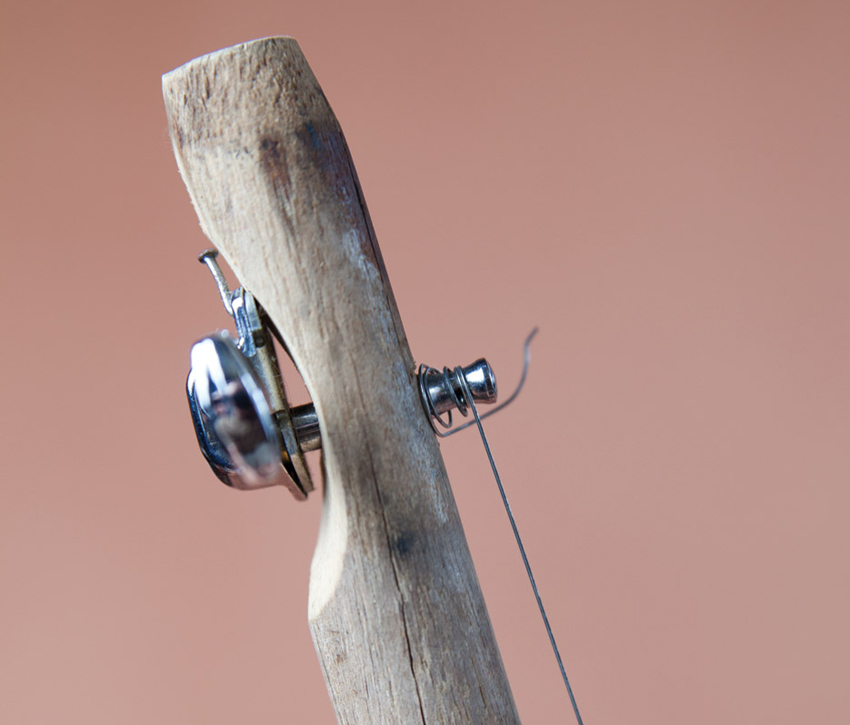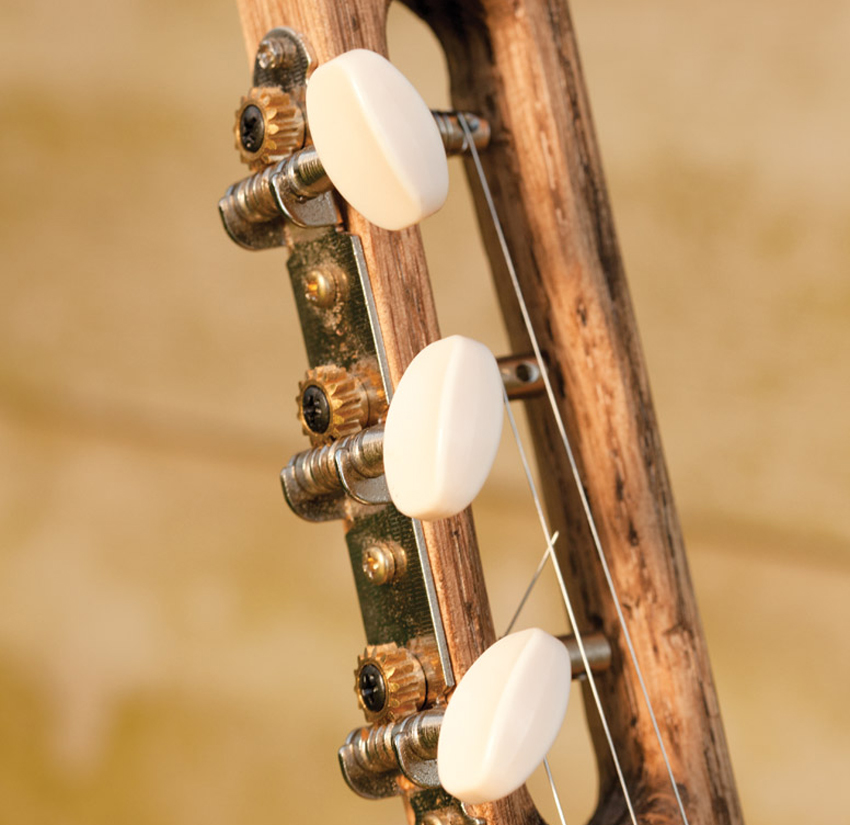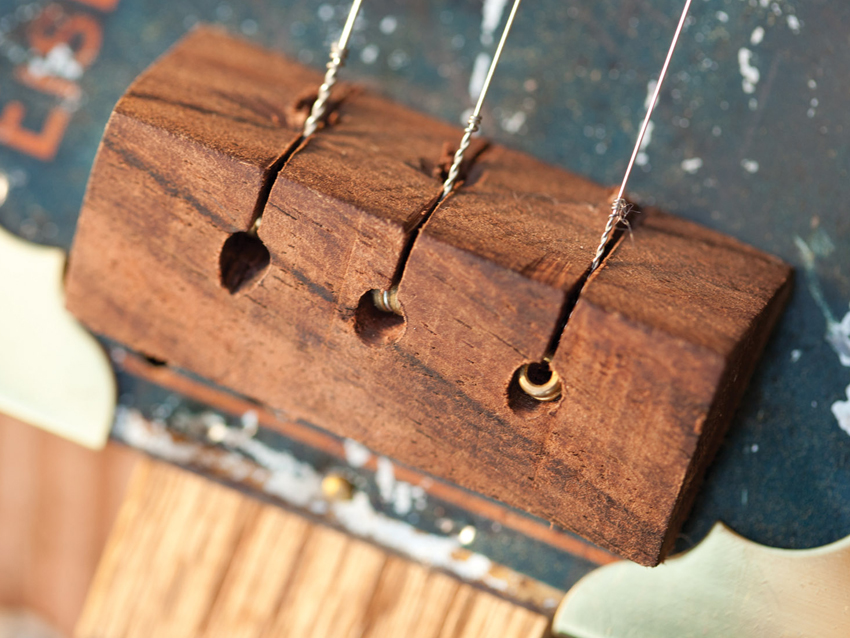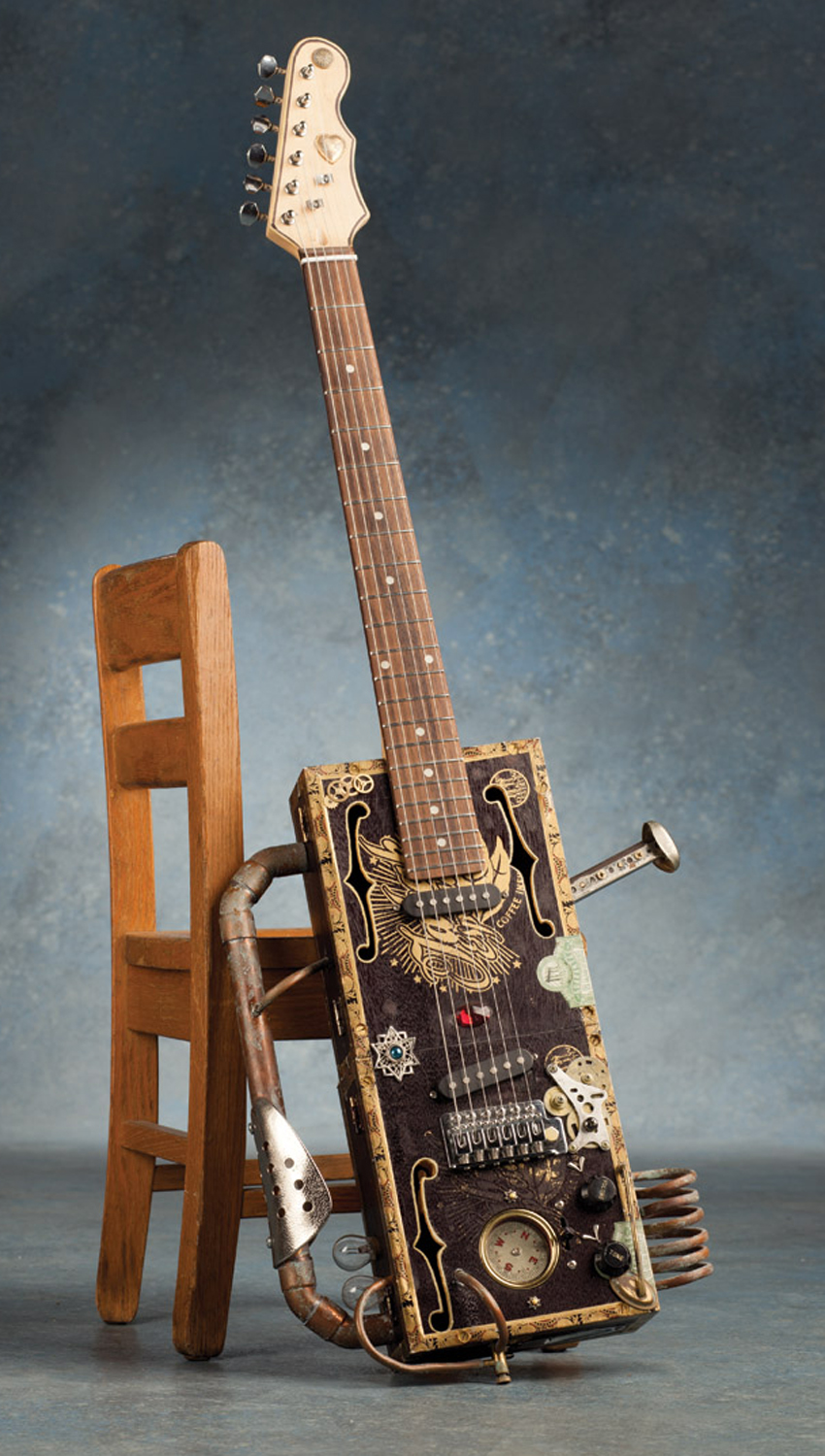
Cigar box guitars: a photo gallery of homemade greatness
"It was pretty fun how this all came together," says David Sutton, whose book, Cigar Box Guitars: The Ultimate DIY Guide For The Makers And Players Of The Handmade Music Revolution, will be issued by Fox Chapel Publishing on 1 March 2012. "Through the years I've been active in woodworking, guitar playing, photography and writing. So this project combined my interests beautifully."
Five years ago, Sutton wanted to give his young daughter an acoustic guitar for a birthday present, but he didn't feel right about parting with one of his vintage beauties - and besides, they were too large anyway. "I had heard about cigar box guitars, so I thought, Hey, why not just build her one?" says Sutton. "I was stunned to find that there was hardly anything on Google about building a cigar box guitar. That really surprised me."
There was one site, however, that offered useful information on how to build a wooden cigar box guitar. Sutton followed the instructions and built not one, but two guitars, one for his daughter and one for himself. "The whole experience really got me excited," he says. "I knew I wanted to spread the word."
Sutton contacted Fox Chapel Publishing about putting together a book on cigar box guitars. He figured that he wouldn’t hear anything at all, and if he did, it would be a rejection. But the next morning, a rep from the company called to say they were keenly interested – and when could it be finished?
“I was so unprepared for that,” says Sutton. “But I think I threw them when I said I wanted to do a book with three separate components, the first showing people how to build straight-up acoustic models for slide, the second for fretted electrics, and a third and last chapter for six-string electrics. Before long, they realized that the three-section approach was the way to go.”
In reaching out to fellow cigar box guitar builders, Sutton was more than impressed at how the movement had grown in the time since he had first thought of crafting a model for his daughter. “It exploded almost overnight,” he says. “All of these people are building cigar box guitars. They’re totally into it, and they’re very into helping one another out and creating a community.
“The guitars people are building range from simple, cardboard diddley bow-type instruments to wooden box electric six-string models that are just as good as something you can buy in a store. At first I was fascinated by the guitars alone, but then I got into the folks making them. Their stories are incredible."
Sutton insists that the makers of cigar box guitars aren't luddites; rather, they're discerning craftspeople who yearn for a personal connection to their instruments. "They occupy a niche, but they're a growing niche," says Sutton. "Mass market guitars exist for many people. For others, there's something else - and that's beginning to mean cigar box guitars."
Joe is a freelance journalist who has, over the past few decades, interviewed hundreds of guitarists for Guitar World, Guitar Player, MusicRadar and Classic Rock. He is also a former editor of Guitar World, contributing writer for Guitar Aficionado and VP of A&R for Island Records. He’s an enthusiastic guitarist, but he’s nowhere near the likes of the people he interviews. Surprisingly, his skills are more suited to the drums. If you need a drummer for your Beatles tribute band, look him up.






















